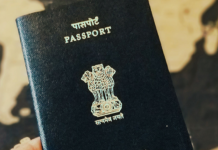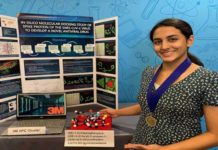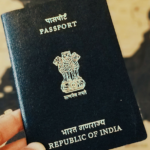A group of three engineers, two of which are Indian-Americans are working on developing eco-friendly polymers from shrimps, mushrooms and other organisms that would help create a high-impact multilayered coating that could help shield the soldiers from bullets on the battlefield.
The engineers are working from the University of Houston, are making use of chitin, which is a derivative of glucose that is found in the cell walls of a few organisms including arthropods and fungi. They are mixing that with the technology of 3D printing to make the end results possible.
These bullet proof shields would be able to protect the soldiers against bullets, lasers, toxic gas and other dangers when they are amidst a battle.
“Chitin offers promise as a commonly available material that could be processed and used in some products that now require petroleum-based plastics,” said Indian-American Alamgir Karim, Dow Chair Professor of chemical and biomolecular engineering.
His main aim was to process them to an extent that they become so tough and protective that they could serve as a good alternative to the non-recyclable plastic that is often used in today’s world.
These coatings that they are working on are going to be biodegradable in nature and would decompose once they are thrown back into the nature.
Karim is the principle investigator of the study which has achieved a grant of USD 660,000 grant from the US Department of Defence.
The other two research engineers in the study include Indian-American Venkatesh Balan, assistant professor of engineering technology, along with Megan Robertson, associate professor of chemical and biomolecular engineering.
The main of their subject and study is to develop tough, durable and antimicrobial multilayer films that would successfully help resist the forced projectiles or the laser attacks while also absorbing the toxic gases successfully.
Karim further reported that the impacts of this specific find could go beyond the needs of the defence and can even come in handy because of its eco-friendly approach.
Chitin, which is the principle component used in the development of the item in this study is a very common compound that is found in the cells walls in fungi along with the exoskeletons of the arthropods and the fish scales too.
This compound is further processed to produce chitosan, which is a de-acetylated chitin which is a fibre that is often sold in the market for treating conditions like obesity and several other conditions like high cholesterol and such.
Balan, who lab is famous for the production of a number of the components for medical and industrial use also, conducts processes that help the chitosan molecules extraction using the crustacean shells.
The team which has been using mushroom for the same process stated saying, “mushrooms yield a more consistent degree of polymerisation sustainably, helping to standardise the production of chitin and then process it to become chitosan.”
Robertson is responsible for finding ways to alter the atomic composition at the surface of the chitosan to further improve the way it interacts and interferes. She has an expertise in designing sustainable and biodegradable polymers from the renewable resources.
Karim, on the other hand, is working on engineering a multilayer system that will further incorporate a hardened impact-resistant layer along with an energy absorbing layer for safeguarding the entire structure. Each layer will be developed to target specific complaints to keep the individuals protected.
The process is going to be achieved with the process of 3D printing of the chitin nanoparticles with some of the reinforced crush-zone design structures and then testing their efficacy.
“It is a very good, environmentally friendly project,” Karim said. It is likely going to be spread across multiple niches and sectors including automobile, construction and others.













































